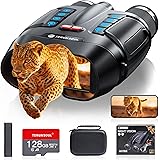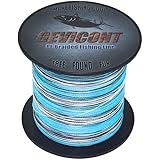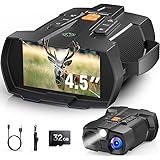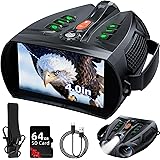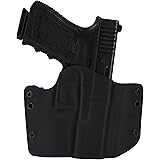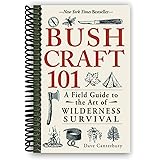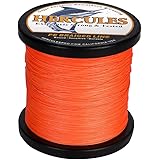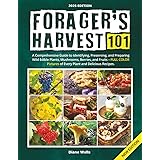Mastering Emergency Medical Preparedness: Why a Survival Medicine Handbook is Essential
How prepared are you for a medical emergency when professional help is simply not an option? As explored in the video above, events like Hurricane Matthew serve as stark reminders of how quickly access to essential services, including medical care, can disappear. In such scenarios, your ability to act as your family’s primary healthcare provider becomes not just valuable, but absolutely vital. This is precisely why a comprehensive survival medicine handbook is an indispensable tool for anyone serious about self-reliance and disaster readiness.
When the power is out, the internet is down, and roads are impassable, your digital resources become useless. A physical guide, like The Survival Medicine Handbook: A Guide for When Medical Help is Not on the Way, transcends technological limitations, offering immediate, actionable knowledge right when you need it most. It’s more than just a book; it’s a tangible asset in your emergency toolkit, equipping you with the practical skills to navigate unexpected medical challenges.
The Critical Role of Physical Medical Guides in Emergency Preparedness
In a world increasingly reliant on digital information, the value of a physical survival medicine handbook cannot be overstated. Imagine a widespread power outage or a natural disaster that cripples communication networks. Your smartphone, tablet, or laptop, typically a gateway to vast medical knowledge, becomes an expensive paperweight. This stark reality underscores the necessity of having robust, non-reliant resources readily available.
Studies show that a significant percentage of post-disaster complications and fatalities are preventable with basic medical intervention and knowledge. Without access to doctors or emergency services, individuals must often improvise and rely on their own skills. A physical book provides a stable, accessible source of critical information, ensuring that vital medical instructions are always at your fingertips, regardless of external circumstances. It bridges the gap between helplessness and effective action in a crisis.
Comprehensive Topics Covered in a Robust Survival Medicine Handbook
A truly comprehensive emergency medical guide goes far beyond basic first aid. It anticipates a wide array of potential scenarios, from minor injuries to severe, life-threatening conditions. The depth of topics covered in resources like The Survival Medicine Handbook is designed to transform a layperson into a capable first responder for their household or community. Here’s a closer look at the scope of knowledge such a guide provides:
1. Principles of Medical Preparedness and Becoming a Medical Resource
Understanding the foundation of preparedness is key. This section typically covers how to assess your current readiness, identify common threats, and begin building your medical supplies. It emphasizes the mindset shift required to become a proactive medical resource for yourself and others, focusing on prevention, assessment, and basic intervention strategies.
2. Hygiene and Sanitation in Crisis Scenarios
One of the most overlooked aspects of post-disaster health is sanitation. Without running water or waste disposal systems, diseases can spread rapidly. This part of the handbook provides crucial advice on maintaining personal hygiene, safe water collection and purification, and proper waste management to prevent outbreaks of illness, which often account for a large portion of casualties in prolonged crises.
3. Addressing Dental Issues Without a Dentist
Dental pain can be excruciating and debilitating, especially when professional dental care is unavailable. A good survival medicine handbook will offer guidance on dealing with toothaches, broken teeth, abscesses, and other common dental emergencies using improvised tools and natural remedies. Untreated dental infections can quickly lead to systemic health problems, making this a critical skill.
4. Food and Waterborne Illnesses: Prevention and Treatment
Contaminated food and water are major threats during emergencies. This section details how to identify symptoms of common illnesses like cholera, dysentery, and giardia, and provides instructions on managing dehydration, administering supportive care, and preventing further spread. Understanding safe food handling and water purification techniques is paramount.
5. Managing Infections: Identification and Treatment Strategies
Infections can turn a minor cut into a life-threatening condition in an off-grid environment. The guide covers how to recognize signs of bacterial, viral, and fungal infections, how to clean and dress wounds to prevent infection, and even discusses the use of antibiotics if available and appropriate. It also delves into natural antiseptic and anti-inflammatory alternatives when conventional medicine is scarce.
6. Environmental Factors and Their Medical Implications
Survival often means confronting harsh environments. This section would address medical issues arising from exposure to extreme heat (heatstroke, dehydration), cold (hypothermia, frostbite), and other environmental dangers such as snakebites, insect stings, and exposure to toxic plants. Practical steps for prevention and immediate treatment are highlighted.
7. Wound Management: Minor, Major, and Advanced Techniques
From simple cuts to deep lacerations, understanding proper wound care is fundamental. The handbook teaches you how to clean, sterilize, and close wounds effectively, including techniques for stitches and staples. It also covers managing severe bleeding, preventing shock, and recognizing signs of infection in various wound types. The goal is to minimize scarring and prevent complications that could arise from improper treatment.
8. Triage and Chronic Medical Problems
When multiple individuals are injured, knowing how to triage—prioritizing treatment based on severity and prognosis—is essential for maximizing survival rates. Additionally, many people live with chronic conditions such as diabetes, heart disease, or asthma. The guide provides crucial advice on managing these conditions when regular medications or medical supervision are interrupted, often suggesting alternative management strategies.
9. Medicines and Alternative Remedies
This chapter offers an overview of essential over-the-counter and prescription medications for a survival scenario, including their uses, dosages, and potential side effects. Critically, it also explores natural and alternative medicine approaches, such as herbal remedies and essential oils, which can be invaluable when conventional pharmaceuticals are unavailable. This dual approach maximizes your treatment options in resource-scarce environments.
The Power of Preparedness: Learn from Experience
The experience of enduring a natural disaster like Hurricane Matthew, as mentioned in the video, highlights the profound regret many feel for not being adequately prepared. The sudden loss of essential services, coupled with the inability to access medical professionals, can be terrifying. This feeling of helplessness is precisely what a robust survival medicine handbook aims to alleviate. It empowers individuals with the knowledge to make informed decisions and take decisive action, transforming fear into confidence.
Even for those with an aversion to certain medical procedures, like the speaker’s discomfort with stitches, learning these skills is a necessary step towards comprehensive preparedness. The structured, visual guides found in a quality handbook can demystify complex procedures, making them accessible even to those with no prior medical training. Investing in such a resource today means investing in the safety and well-being of your family tomorrow.
It is crucial to equip yourself with reliable, tangible resources that operate independently of fragile infrastructure. A high-quality survival medicine handbook is more than just a recommendation; it’s a fundamental component of any serious emergency preparedness plan, ensuring you are ready for any medical challenge that may arise.


